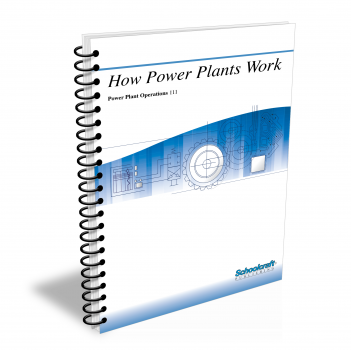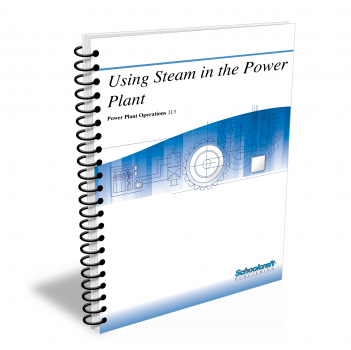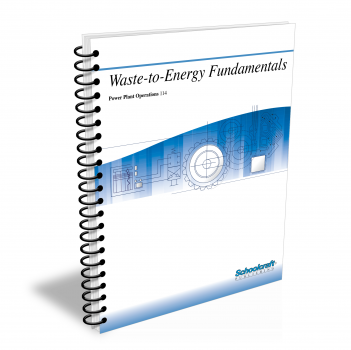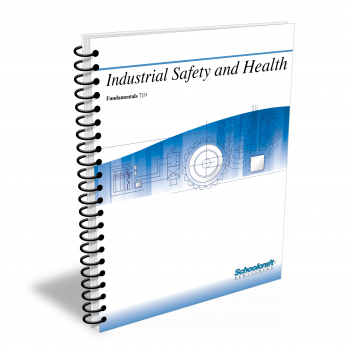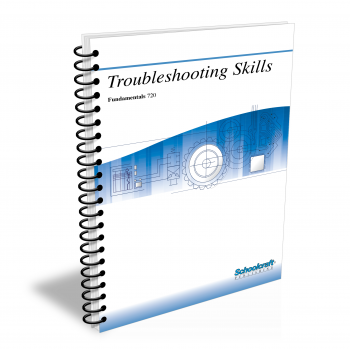Generating Steam in the Power Plant
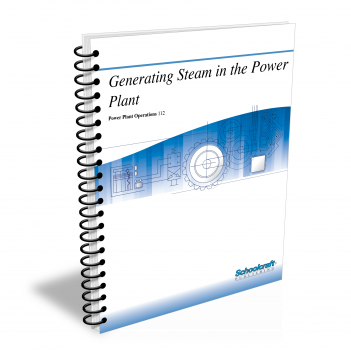
Course Number: 112
The Generating Steam in the Power Plant textbook covers energy principles and boiler maintenance. It explains coal, oil, and natural gas combustion, and how to conserve energy through improved combustion control.
Does your curriculum require additional topics not included in this textbook? Build a customized version of the Generating Steam in the Power Plant textbook below.
Recommended Contact Hours – 10
Preview a Chapter
Available Supporting Material
- Table of Contents
- My Custom Book
- Exam Copies
- Suggested Titles
Table of Contents
Chapter 1: Transforming Energy into Work
Topics: Energy and matter; Fuels; Combustion; Temperature and pressure; Heat transfer; Sensible and latent heat; Enthalpy
Learning Objectives:
- Define energy and describe the main forms of energy encountered in a power plant.
- Explain the process of combustion and list the three elements necessary for combustion to occur.
- Explain the principles of temperature and pressure measurement and describe the four scales on which temperature is measured.
- Describe the methods of heat transfer and the types of effects heat transfer can have on a material.
- Summarize the interrelationship of temperature, volume, and pressure in a gas.
Chapter 2: Boiler Operation
Topics: Types and characteristic of boilers; Water treatment; Boiler and cooling tower blowdown; Wastewater disposal; Thermodynamic efficiency
Learning Objectives:
- Compare the two basic types of boilers.
- Describe the characteristics by which boilers are classified.
- Explain the different processes by which water is treated for use in a boiler.
- Define blowdown and explain its importance in boiler operation.
- List the problems associated with wastewater disposal and describe how these problems are overcome.
- Describe the factors that affect boiler efficiency, as well as auxiliary equipment efficiency.
- Calculate thermodynamic efficiency.
- List practices that aid in energy conservation in all areas of the power plant.
Chapter 3: Boiler Maintenance
Topics: Soot and scale removal; Corrosion; Calibration; Cleaning; Maintaining auxiliaries; Valves; Piping; Pumps; Fans; Controls; Stacks and cyclones
Learning Objectives:
- Explain how the two types of sootblowers remove soot and slag from heat exchange surfaces.
- Describe how scale forms on boiler surfaces and list the three common removal methods.
- Explain why both hot-end and cold-end corrosion occur in a boiler, and tell what practices help prevent corrosion.
- Describe how refractory should be maintained and list the problems that can occur if it is not properly maintained.
- List the primary functions of boiler control systems and describe the three common types.
- Explain how to calibrate and clean boiler control systems and maintain compressed air systems.
- Summarize maintenance procedures for boiler auxiliaries such as pumps, valves, motors and electric circuits.
Chapter 4: Combustion and How It Works
Topics: Coal, oil and natural gas; Chemistry and efficiency of combustion; Burners; Flame color and adjustment; Coal firing; Ash analysis
Learning Objectives:
- Identify the different ranks of coal and describe how the makeup of coal affects its heating value.
- List the properties that are tested in a coal analysis.
- Summarize the properties of oil and natural gas fuels.
- Explain the combustion process in detail.
- Describe how to interpret and adjust a flame's characteristics in coal, oil, and gas burners.
- Describe the three types of coal firing systems.
- List the ways in which combustion efficiency is measured.
Chapter 5: Steam Generation
Topics: Temperature/pressure/volume relationships; Superheating; Boiler water circulation; Conserving energy; Blowdown; Makeup water
Learning Objectives:
- Trace the flow of water and steam through the boiler system.
- Explain the relationship between temperature and pressure and explain why superheated steam has a higher quality than saturated steam.
- Read a steam table properly and apply its information to a boiler system.
- Compare natural circulation boilers with forced circulation boilers, and explain how pressure and temperature affect the type of boiler used.
- Describe the process of operating a high-pressure boiler at low pressure.
- Describe how proper maintenance of steam traps, valves, packing, flanges, and insulation improve the energy conservation rate in a boiler system.
Add Chapters to Your Custom Book
Select Chapter(s):
- Chapter 1: Transforming Energy into Work
- Chapter 2: Boiler Operation
- Chapter 3: Boiler Maintenance
- Chapter 4: Combustion and How It Works
- Chapter 5: Steam Generation
My Custom Book
Create a custom book that contains only the training content that your students need to succeed
Our topics cover a broad and diverse spectrum of subject matter, from reading blueprints to electrical schematics, measurement to rigging and safety, material handling to welding, and everything in between! Choose only the lessons that meet your specific curriculum requirements.
Request Exam Copies
Exam Copies
Ready to see a copy of our textbooks? After selecting which textbooks you’d like to review for your course, you can submit your request by either logging in or creating an account so we know where to ship your exam copies. A representative from Schoolcraft will contact you to confirm and finish processing your request.
Exam copies are always free and yours to keep.
Selected Exam Copies
none selected
* Maximum of five copies can be ordered
